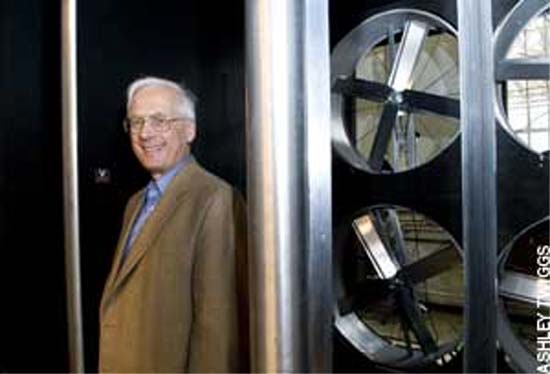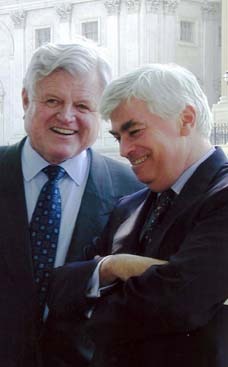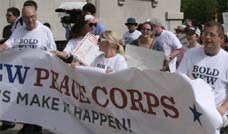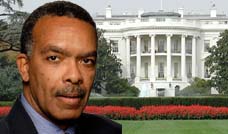
Allaire confesses that when he graduated from Yale University with bachelors and master's degrees in engineering in 1964, "I really had no idea what I wanted to do. I wanted an adventure, which was not in Vietnam, so I joined the Peace Corps and got assigned to teach engineering in a small engineering college in Addis Ababa, Ethiopia. I had never traveled anywhere in my life before." Allaire had grown up in Windsor, Connecticut, about 40 miles up the road from Yale. He had been good at math and science and liked understanding how things worked-or didn't. Hooked by his foreign travel and teaching, Allaire decided to become a professor. He graduated with his Ph.D. in mechanical engineering from Northwestern University in 1971, during what he describes as "another economic downturn. The only job I could get was teaching at Memorial University of Newfoundland, Canada, so my wife and I went there." He arrived at UVA the next year. Thirty-seven years later, he is still here-and very much all over the place, from the Engineering School to the Medical School to meeting with Dominion. "I get to work with some very smart people," Allaire concludes. "I love what I do. I get to play with all this stuff."
Ethiopia RPCV Paul Allaire keeps hearts and turbines running
Paul Allaire goes with the flow
Mechanical engineer keeps hearts and turbines running
BY MARK MEIER
Caption: Mechanical Engineering Professor Paul Allaire is collaborating on a vertical-axis wind turbine. He describes it as an eggbeater versus the more common propeller. It generates less electricity, but it costs only $100,000. A big turbine can generate 3 to 5 MW of electricity and costs $8 million. "The typical power rating for a farm," Allaire says, "is 8 to 10 kW. If you had a 20-50kW wind turbine, then you could run it three times a week, store the energy in a big battery, and save yourself a lot of money."
"Do you know what the biggest cause of failure is for artificial hearts?" Paul Allaire asks. "People closing the door on the wires when they get out of the car." A professor of mechanical engineering at UVA, Allaire approaches the world this way: How do things work, why do they fail, and how can we improve those things so that they better help people?
Allaire's most recent patent, filed just last week, helps blood flow smoothly through artificial hearts. That even flow reduces the chance of clots and stroke. Allaire wants to add sensors and a back-up battery, so that if you do cut the wires in your car door, the heart keeps pumping and sends a wireless S.O.S.
In the same week as his patent filing, however, Allaire entertained U.S. Congressman Tom Perriello and other local politicians who wanted to check out his wind turbines. His meeting garnered news reports up and down the state. Allaire, recently appointed director of UVA's Jefferson Wind Energy Institute, is collaborating on a vertical-axis wind turbine. He describes it as an eggbeater versus the more common propeller.
"We really need two kinds of turbines," Allaire explains. "Big wind and little wind." Big wind propellers normally sit offshore or other places where wind speeds regularly reach 30 miles per hour. One big turbine can generate 3 to 5 MW of electricity and costs $8 million.
In contrast, an eggbeater can work in winds of 15 miles per hour, like those that stream over the Appalachian Mountains. It generates less electricity, maybe 20 kW, but it also costs only $100,000 and looks no worse then a cell phone tower. "The typical power rating for a farm," Allaire says, "is 8 to 10 kW. If you had a 20-50kW wind turbine, then you could run it three times a week, store the energy in a big battery, and save yourself a lot of money." A half dozen homes could band together to do the same thing.
So, how do hearts resemble turbines? Air flows over a turbine, blood through the pump of an artificial heart. "I was working on neither of them 20 years ago. I was working on something called magnetic bearings and heard about artificial heart pumps." Magnetic bearings levitate in rotary machines, like turbines and heart pumps. Since levitating bearings don't touch anything, they waste less energy and don't wear out.
Allaire confesses that when he graduated from Yale University with bachelors and master's degrees in engineering in 1964, "I really had no idea what I wanted to do. I wanted an adventure, which was not in Vietnam, so I joined the Peace Corps and got assigned to teach engineering in a small engineering college in Addis Ababa, Ethiopia. I had never traveled anywhere in my life before."
Allaire had grown up in Windsor, Connecticut, about 40 miles up the road from Yale. He had been good at math and science and liked understanding how things worked-or didn't. Hooked by his foreign travel and teaching, Allaire decided to become a professor. He graduated with his Ph.D. in mechanical engineering from Northwestern University in 1971, during what he describes as "another economic downturn. The only job I could get was teaching at Memorial University of Newfoundland, Canada, so my wife and I went there." He arrived at UVA the next year.
Thirty-seven years later, he is still here-and very much all over the place, from the Engineering School to the Medical School to meeting with Dominion. "I get to work with some very smart people," Allaire concludes. "I love what I do. I get to play with all this stuff."
C-VILLE welcomes news tips from readers. Send them to news@c-ville.com.












